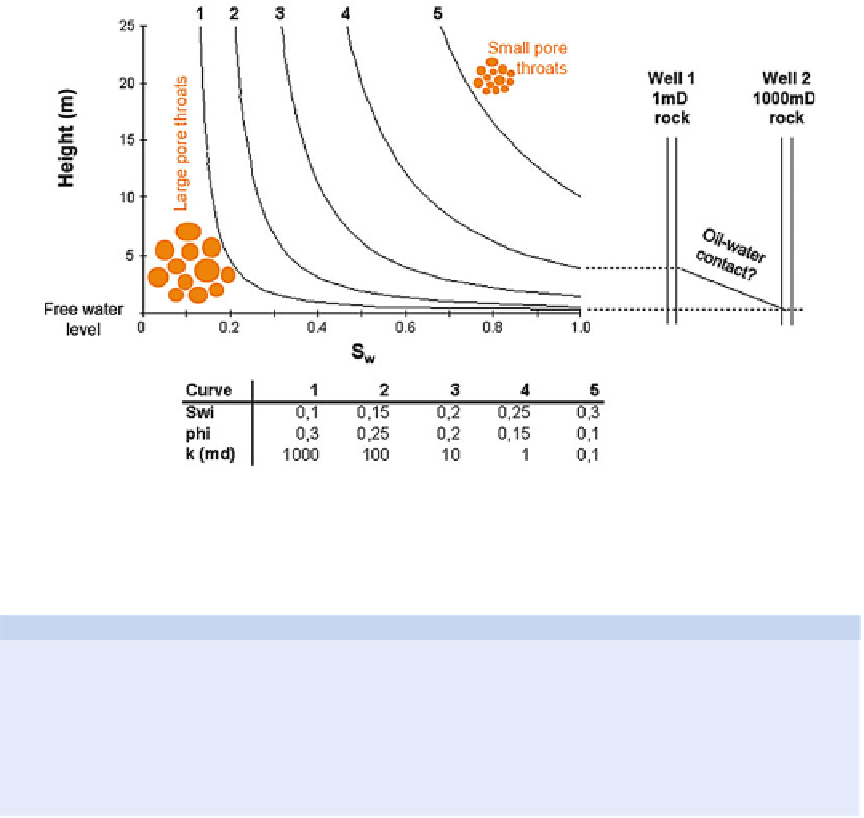Geoscience Reference
In-Depth Information
Fig. 3.43
Example saturation-height functions for the listed input parameters, illustrating how an apparent change in
oil-water contact may be caused by rock property variations between wells
Table 3.6
Selected examples of tilted oil-water contacts
Field, Location
Tilt of OWC (m/km)
References
South Glenrock, Wy. USA
<
95
Dahlberg (
1995
)
Norman Wells, NWT, Canada
75
Dahlberg (
1995
)
Tin-Fouye, Algeria
10
Dahlberg (
1995
)
Weyburn, Sask., Canada
10
Dahlberg (
1995
)
Kraka, North Sea (Denmark)
10
Thomasen and Jacobsen (
1994
)
Billings Nose, N.Da., USA
5
Berg et al. (
1994
)
Knutson, N.Da., USA
3
Berg et al. (
1994
)
function (detected by a logging tool) would be
close to curve 3. That
Africa and North America, there are numerous
well-documented examples. These represent
continental basins with appreciable levels of
topographically driven groundwater flow, or
hydrodynamic gradients. Dahlberg (
1995
)
provides a fairly comprehensive study of the
evidence for, and interpretation of, tilted oil
water contacts. Berg et al. (
1994
) give good
documentation of some examples from Dakota,
USA. In the offshore continental shelf petroleum
provinces, such as offshore NW Europe the cases
are fewer, but still evident. Table
3.6
lists a range
of examples.
Here, we are concerned with the implications
that
is,
the average S
w
. However, if the
thin beds were composed of an unknown random
mix of rocks types 1, 2, 3, 4 and 5 then it would
clearly be very difficult to infer the correct rela-
tionship between S
w
, k and
corresponds to the average k/
ϕ
ϕ
.
3.7.3 Tilted Oil-Water Contacts
Depending on which part of the world the petro-
leum geologist is working, tilted oil-water
contacts are either part of accepted or disputed
folk law. In parts of the Middle East, North
tilted hydrocarbon-water contacts might











